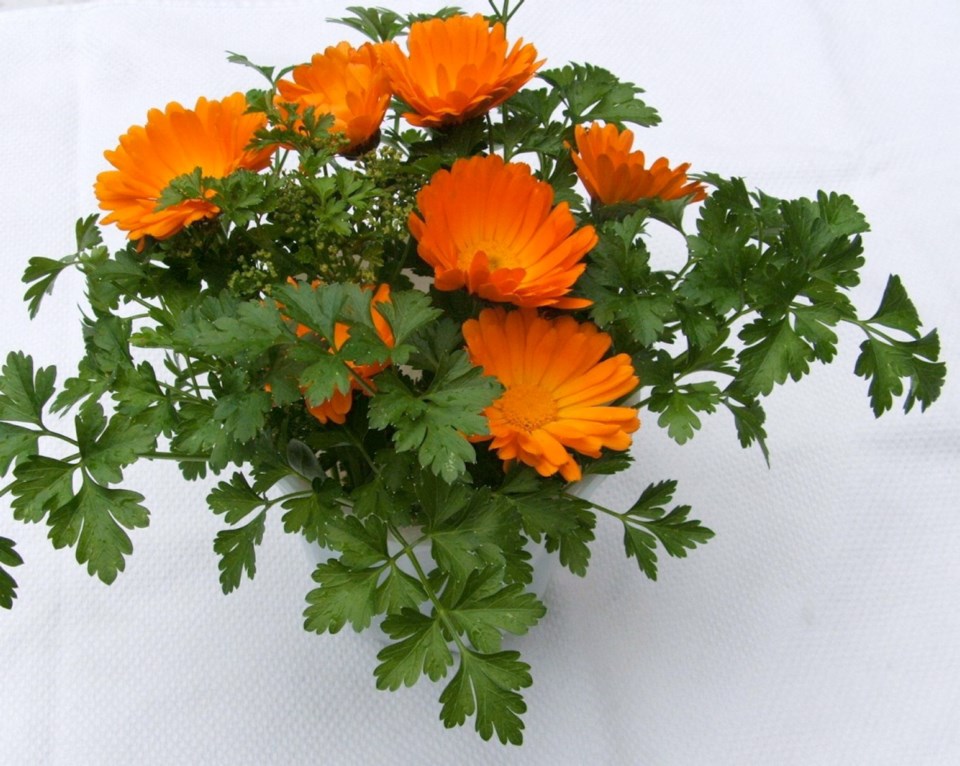Dear Helen: I bought flower bulbs in the fall, but delayed planting because the weather stayed so warm. Then I forgot about them. Is it too late now to plant? Would they keep in a dark place for planting in the fall of this year? If it’s not too late, should I alter the recommended planting depth?
L.H.
The bulbs will not keep. Plant them now, following package directions. They will likely be a bit depleted, having missed their normal rooting time, but with luck, they will root rapidly and give some bloom, probably later than they would normally.
In good soil, and if they produce decent foliage, the bulbs will rebuild themselves for a return to normal rooting and full bloom in the spring of next year.
Hardy spring flower bulbs become available in late summer and early autumn, when night temperatures have begun cooling. Daytime temperatures do not need to be cool for rooting to occur. I remember once digging up a few narcissus bulbs by mistake, in July. Those bulbs had already begun to grow fresh roots.
Dear Helen: Are all marigolds edible? In what sorts of dishes are they used? Is the whole flower eaten?
F.S.
Most types of marigold commonly grown in home gardens have a bitter taste. Two kinds are pleasant additions to dishes.
“Signet” marigold (Tagetes tenuifolia) plants form small, ferny, fragrant mounds covered with tiny single flowers mainly in yellow or orange. Most catalogues carry one or more colours in the “Gem” series.
T&T Seeds lists Lemon, Tangerine and Red Gem. West Coast Seeds lists Lemon Gem, which some consider the most pleasant-tasting. The flavour is lightly citrus, with a hint of tarragon. The petals are pretty scattered on salads and desserts. Seed Savers Exchange lists Starfire, a fine colour mixture.
Signet marigold plants are good for edging beds and for growing in containers. They are colourful fillers in vegetable and ornamental plots. I’ve noticed that as nights begin cooling in late summer, the bloom colours intensify noticeably, as they flower well into autumn. The plants are considered deer-resistant, as are most marigolds.
The other flower, commonly called “marigold,” that is eminently edible is not actually a marigold. It is calendula, or “pot” marigold — a name used not because of its adaptability to growing in pots but because of its historic addition to foods cooked in pots.
In times past, soups and stews were traditionally flavoured and coloured with bright, tasty calendula petals, which were considered the “poor man’s saffron.”
To brighten a salad, scatter calendula petals over top. If borage grows in the garden, add its blue, cucumber-flavoured flowers over the salad too, for a visual as well as a taste treat.
Calendula is a hardy annual that grows into a bushy plant around 38 centimetres tall with long, slender leaves and many-petalled flowers in sunny hues, mainly of orange and yellow, though some varieties bear blooms in apricot and buff shades.
Calendula, too, is an excellent, easy-growing filler or edging flower in vegetable gardens. The plants self-sow freely, and can produce bloom close to year-round. I found some of the flowers open along a vegetable-plot edge 10 days ago.
The plants are deer-resistant. Late last summer, when a deer got over a back fence into my garden, it munched down new winter-vegetable transplants and ate beans, kale, roses and apple trees, but it did not touch the calendula plants.
With both signet marigold and calendula, only the petals are used.
Dear Helen: When do you sow pansy and viola seeds for the container flowers you have written about?
L.B.
I seed in January to early February for fresh spring flowers to join the overwintered ones that I had sown the previous July — a seeding that yields bloom from early autumn through the following spring. I transplant them into shallow bowl-shaped containers placed on raised stands on the patio, next to the glass doors.
Keep seeded flats in the dark, covered with black plastic or sheets of newspaper, for the 10- to 15-day germination period.
Garden events
View Royal meeting. The View Royal Garden Club will meet this evening at 7:30 in Wheeley Hall, 500 Admirals Rd. in Esquimalt. Chris Hildreth of TOPSOIL will present “Growing Food Anywhere.” The evening will also feature a sales table and a judged mini show of exhibits from members’ gardens. Non-member drop-in fee is $5.



